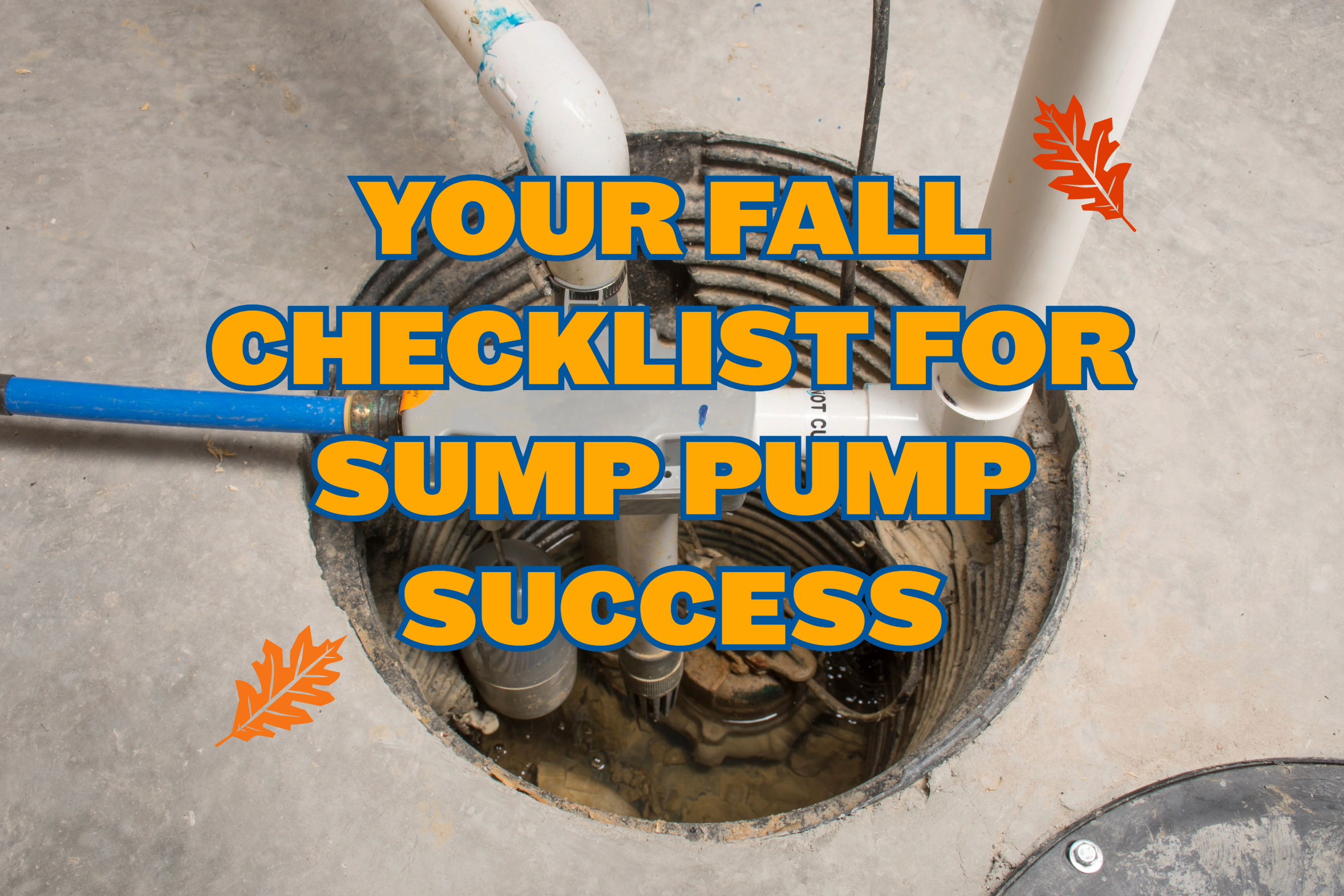Sump pumps are vital plumbing components that play a crucial role throughout the year. However, their importance becomes even more pronounced during the fall and winter seasons, especially in regions characterized by cold temperatures. This is particularly true for us residents of Ohio, where proper maintenance of sump pumps is absolutely critical. Rainfall and snowmelt are real things that need to be dealt with accordingly. With this in mind, we are dedicated to assisting you in ensuring optimal sump pump performance during the upcoming colder months. Without further delay, here is your fall checklist to ensure the success of your sump pump this season, provided by Upper Arlington Plumbing & Drain.
Your Fall Sump Pump Checklist:
Step 1: Take off the lid of the sump pump pit. To initiate this initial step, carefully lift the cover from the sump pump pit or basin. Upon revealing the interior, thoroughly inspect the inside of the pump. In the event of any debris, particles, or rocks being detected, it is imperative to remove them with caution. These foreign objects have the potential to hinder the operation of the sump pump, which may lead to overflow issues—an outcome that we strongly do not recommend.
Step 2: Next, consider the drain hose. It is important to confirm a secure connection and prevent any obstructions or ice buildup, especially during the winter season. A blocked or frozen drain hose can lead to continuous sump pump operation and hinder the proper discharge of water from the pit. Therefore, it is recommended to inspect the drain hose regularly throughout the year.
Step 3: Now, let us shift our focus to the inlet screen. The inlet screen holds a crucial position on our checklist as it facilitates the entry of water into the pit of the sump pump. Consequently, a blocked inlet screen can impede water access, potentially resulting in flooding and other plumbing emergencies.
Step 4: Don’t skip over examining the float mechanism as well. It is crucial to ensure that the float mechanism is functioning correctly and stays in optimal condition. This essential component determines the activation of the pump to remove excess water. Therefore, verifying the operational status of the float mechanism is equally critical alongside the other steps in this list. A malfunctioning float can lead to the pump’s failure to respond when necessary or result in continuous operation, potentially causing damage to the pump’s engine over time.
Step 5: Conduct a trial run to assess the functionality of your sump pump. Do this by pouring a bucket of water directly into the sump pit and carefully observing its performance, noting its response and effectiveness in removing the excess water. In case of pump failure, inspect the power source connection and ensure the power cord is free from any signs of damage or malfunction.
Step 6: Confirm the placement of the discharge pipe. The discharge pipe is responsible for effectively removing excess water from your residence. It is crucial to ensure proper discharge to avoid potential issues in the future. Incorrect placement of the discharge point may result in water seeping back into the pump, accelerating wear and tear and potentially reducing the lifespan of the sump pump. Therefore, it is important to monitor the discharge process to maintain optimal functionality.
Bear in mind that the discharge pipe must not be situated in close proximity to neighboring homes, structures, or other buildings. Simultaneously, it is imperative to ensure that the pipe remains within the boundaries of your property, as discharging excess water onto your neighbor’s property is strongly discouraged.
Step 7: It is crucial to have an emergency plan in place to prepare for unforeseen circumstances. Incidents such as severe storms or power outages can occur unexpectedly. While it is impossible to completely avoid these situations, having a backup battery or generator readily available is highly recommended. By actively implementing a contingency plan, you can ensure that all necessary precautions will be taken in case of power disruptions or unexpected events, providing you with peace of mind.
These practices can effectively maintain your sump pump system and provide crucial protection against potential water damage and other plumbing issues during the cold season. If you encounter any issues with your sump pump, do not delay; call Upper Arlington Plumbing & Drain today at (614) 363-1924, or schedule an appointment by clicking here!




